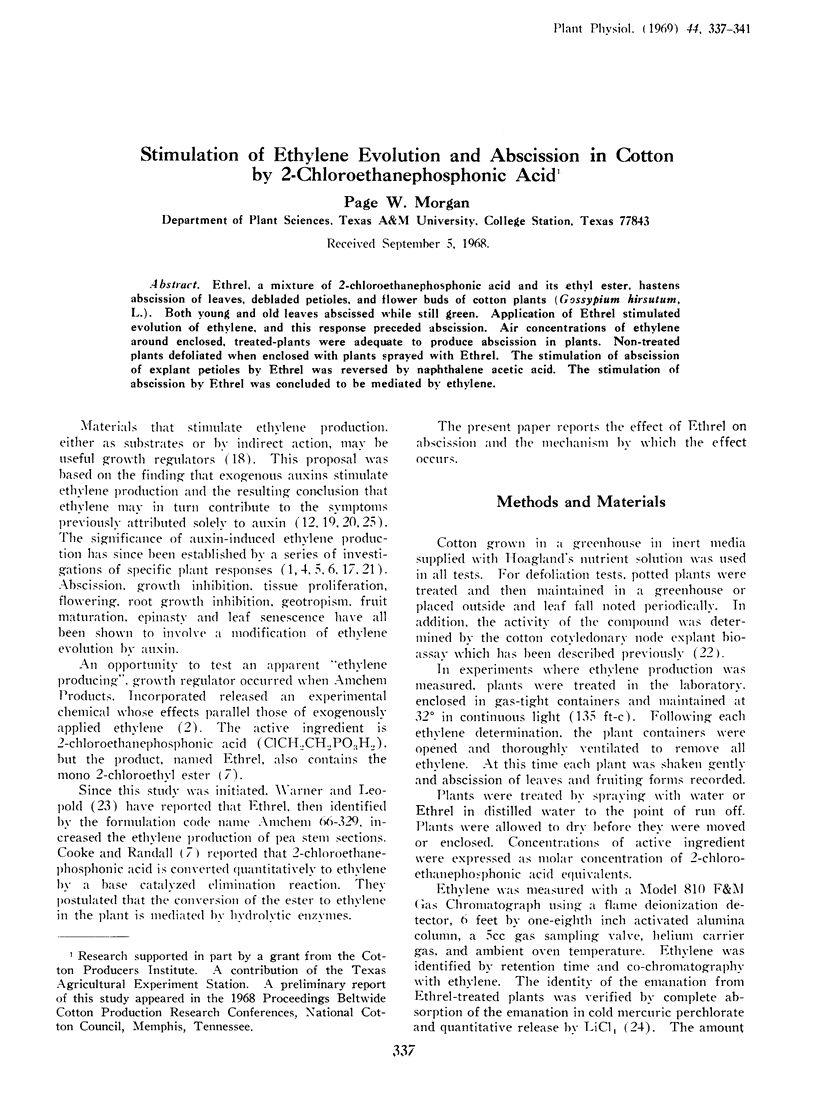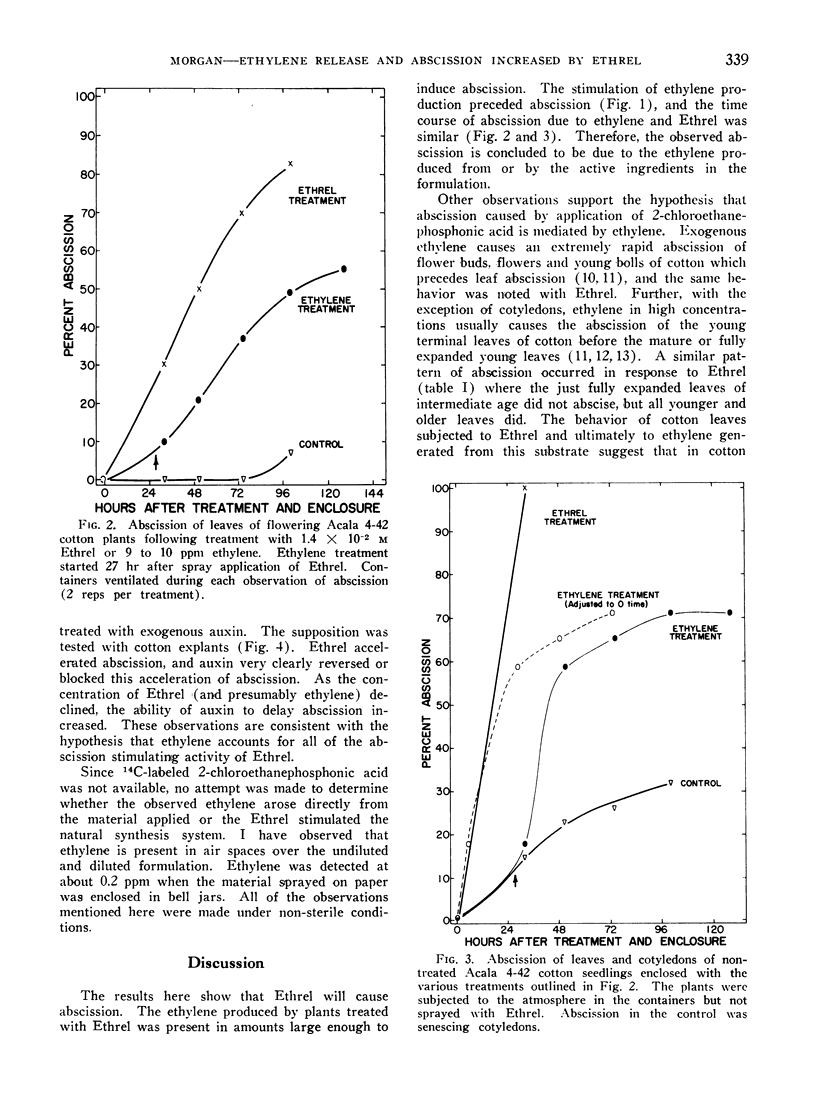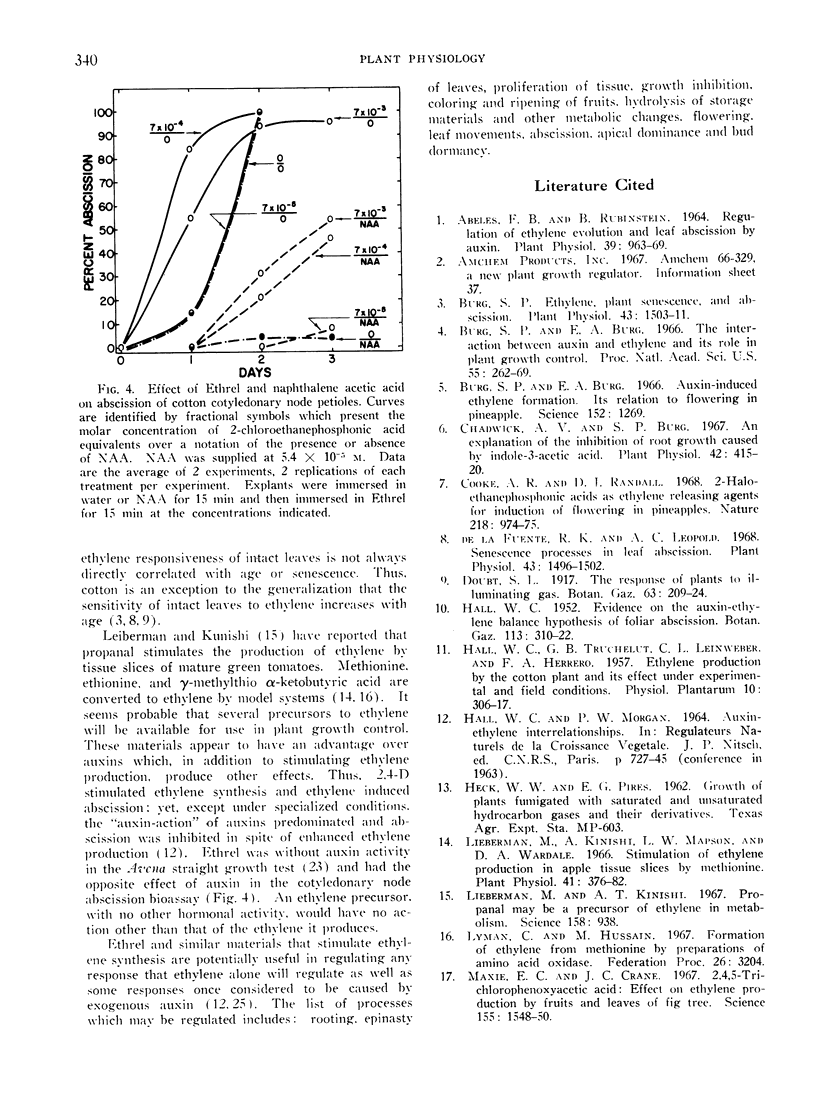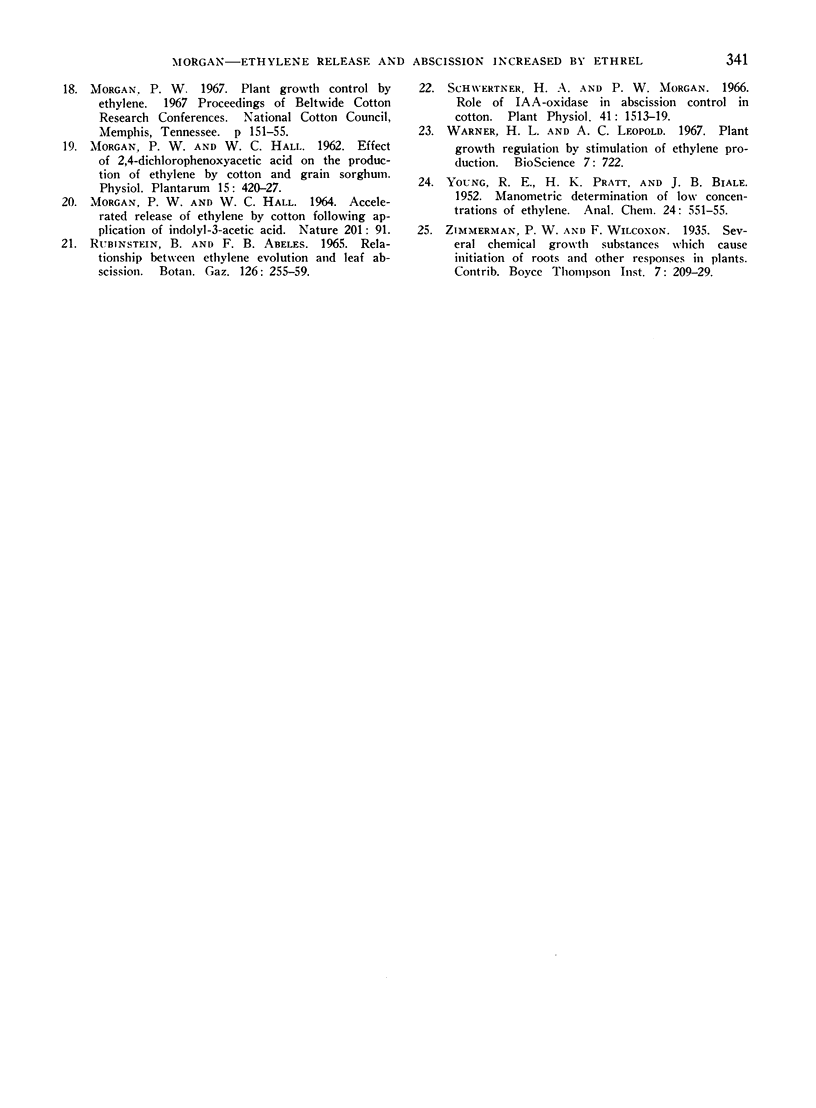Abstract
Ethrel, a mixture of 2-chloroethanephosphonic acid and its ethyl ester, hastens abscission of leaves, debladed petioles, and flower buds of cotton plants (Gossypium hirsutum, L.). Both young and old leaves abscissed while still green. Application of Ethrel stimulated evolution of ethylene, and this response preceded abscission. Air concentrations of ethylene around enclosed, treated-plants were adequate to produce abscission in plants. Non-treated plants defoliated when enclosed with plants sprayed with Ethrel. The stimulation of abscission of explant petioles by Ethrel was reversed by naphthalene acetic acid. The stimulation of abscission by Ethrel was concluded to be mediated by ethylene.
Full text
PDF




Selected References
These references are in PubMed. This may not be the complete list of references from this article.
- Abeles F. B., Rubinstein B. Regulation of Ethylene Evolution and Leaf Abscission by Auxin. Plant Physiol. 1964 Nov;39(6):963–969. doi: 10.1104/pp.39.6.963. [DOI] [PMC free article] [PubMed] [Google Scholar]
- Burg S. P., Burg E. A. Auxin-induced ethylene formation: its relation to flowering in the pineapple. Science. 1966 May 27;152(3726):1269–1269. doi: 10.1126/science.152.3726.1269. [DOI] [PubMed] [Google Scholar]
- Maxie E. C., Crane J. C. 2,4,5-trichlorophenoxyacetic Acid: effect on ethylene production by fruits and leaves of fig tree. Science. 1967 Mar 24;155(3769):1548–1550. doi: 10.1126/science.155.3769.1548. [DOI] [PubMed] [Google Scholar]
- Schwertner H. A., Morgan P. W. Role of IAA-Oxidase in Abscission Control in Cotton. Plant Physiol. 1966 Nov;41(9):1513–1519. doi: 10.1104/pp.41.9.1513. [DOI] [PMC free article] [PubMed] [Google Scholar]


